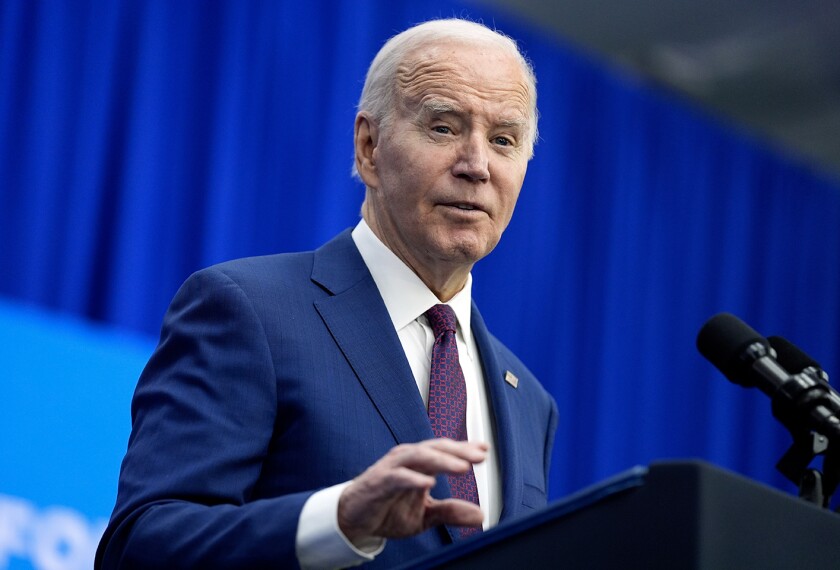Corrected: An earlier version of this story mischaracterized the Boston-based District Management Council. It is a for-profit consulting group that works with public school district leaders.
With America’s public schools unlikely to return to past funding levels in the near future, the District Management Council is set to release a policy guide this week to help districts thrive, rather than just survive, within the constraints of their new fiscal realities.
In the main report, “Spending Money Wisely: Getting the Most From School District Budgets,” the council lists 10 high-impact opportunities that it says helps school systems “do more with less.” The Boston-based consulting group, which helps its member districts with management issues, will begin posting a set of papers outlining specific steps to implement the cost-saving measures, on its website May 8.
“For most of history, school budgets went up faster than inflation, and we managed ourselves well, given that reality,” said Nathan Levenson, the council’s managing director and a former superintendent of the Arlington, Mass., schools. “That reality has changed. It is a world of shifting rather than of adding and, as a result, it requires new strategies and different types of data systems.”
Here are steps that school districts can take to manage their funds more effectively, according to the District Management Council’s latest research:
1. Calculating the academic return on investment of existing programs
2. Managing student-enrollment projections to meet class-size targets
3. Evaluating and adjusting remediation and intervention staffing levels
4. Adopting politically acceptable ways to increase class size or teachers’ workload
5. Spending federal entitlement grants to leverage their flexibility
6. Adopting more-efficient and higher-quality reading programs
7. Improving the cost-effectiveness of professional development
8. Rethinking how items are purchased
9. Lowering the cost of extended learning time
10. Targeting new investments by eliminating inefficient and unsuccessful strategies
SOURCE: “Spending Money Wisely: Getting the Most From School District Budgets”
The council reached out to more than 30 “brainstorming partners,” who included superintendents, chief financial officers, college professors, and researchers, to identify strategies to realign school resources. The council then evaluated those 71 ideas, assessing their financial benefit, impact on student achievement, political feasibility, and certainty of success.
From increasing class sizes to evaluating the academic return on investment, the ideas are intentionally recognizable and actionable, the group says.
“These are very practical, actually implementable, ideas that can lead to higher achievement even if [school district] budgets shrink,” Mr. Levenson said.
The report is part of a $7 million effort funded by the Seattle-based Bill & Melinda Gates Foundation to examine how schools can use money more effectively. The foundation is working on such strategies in the Fayette County schools in Lexington, Ky.; the Lake County schools in Tavares, Fla.; the Knox County schools in Knoxville, Tenn.; and the Rochester, N.Y., district.
Don Shalvey, the deputy director of U.S. education programs at the Gates Foundation, said that one of the greatest challenges district leaders face is getting over the connotation that smarter spending reduces education quality. The guide, along with its research, will help districts communicate the benefits of more cost-effective strategies, he said.
‘No Shortcuts’
While Randi Weingarten, the president of the American Federation of Teachers, agreed that schools should spend their money wisely, she also stressed in a written statement that: “You can’t say education is important and not pay for it.”
“There are no shortcuts to preparing all students for the 21st century knowledge economy and that includes keeping class sizes manageable, ending the obsession with testing, and focusing more on problem solving, critical thinking, learning to be persistent, and working in teams,” she said.
Noelle M. Ellerson, the associate executive director for policy and advocacy at AASA, the School Superintendents Association, in Alexandria, Va., said in an email that absent additional funding, “flexibility can be as good as new money.” She said the council would benefit from advocating increased collaboration among state and local policymakers to maximize that flexibility.
Mr. Levenson, however, believes that most districts, fearful of being noncompliant, have unnecessarily limited their use of federal dollars, especially Title I aid. He said hiring an outside lawyer or a Title I expert to provide advice can lead to a better use of funds.
While the council is not suggesting that all of its measures will be applicable to all districts, Mr. Levenson said, it is crucial for a school system to evaluate the cost-effectiveness of its programs.
Take increasing class sizes, for example. While some believe that larger class sizes would lead to political pushback, Mr. Levenson argues the contrary.
Creating optimal conditions for change—including hiring the most effective teachers for larger classes, boosting pay for teachers who volunteer for the increased workload, and making those classes optional for students will ease any potential tension, he argued.
The report also suggests districts would reap benefits from small investments, such as hiring a demographer or updating data systems.
Mr. Levenson said districts must work to both balance the budget and secure more and better services to improve student achievement.
“You can and you must continue to improve your schools even if you’re not going to have more money,” he said. “One of the first steps is for leaders to believe it’s possible.”




